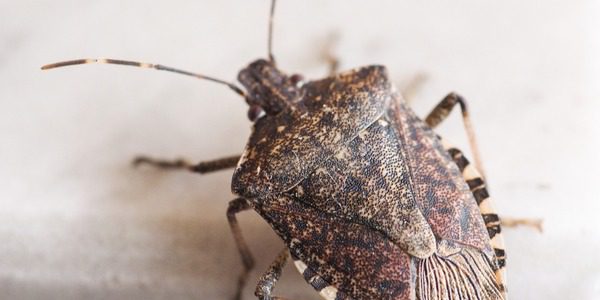
It’s that time of year again—stink bug season!
Stink bugs are small, shield-shaped insects that have become a major nuisance on Long Island and across the United States. Though they’re primarily outdoor agricultural pests, during the fall when the weather starts to cool down, stink bugs will migrate to the sunny sides of homes and commercial buildings seeking warmth and shelter. Then, before you know it, they’ve worked their way inside the structures through any available cracks, gaps, or crevices.
To help you prevent a stink bug invasion this fall, here are 6 stink bug facts you need to know to better understand this common pest.
Stink Bugs Smell
We’ll start with what may seem like an obvious fact. Stink bugs get their name because of the foul smell released from their abdomens when they feel threatened.The smell varies based on which species it is (on Long Island we see the Brown Marmorated Stink Bug most often), but most people describe the scent as as smelling like cilantro.
Stink Bugs Were Accidentally Introduced to the United States in the 1990s
Stink bugs are an invasive species native to Eastern Asia and were accidentally introduced to the United States in the late 1990s in Pennsylvania. Stink bugs are now found throughout the United States, primarily in the mid-Atlantic region, where they have become a major nuisance.
Stink Bugs Eat a Varied Diet
Stink bugs are omnivores, meaning they will eat both plants and other insects. Their diet includes fruits such as apples and pears, vegetables like okra and squash, and even plants that grow from seeds like dill. Some stink bug species have even been known to eat aphids (plant-sucking bugs) off the leaves of plants if nothing else is available.
Stink Bugs Are a Threat to Crops and the Agricultural Industry
As we touched on earlier, sting bugs are established across the country and pose a major threat to the agricultural industry because they destroy crops, ornamental plants, fruit trees, and gardens. Though we mainly see the brown marmorated stink bug on Long Island, most species of stink bugs feed on plants; they will suck the juice from leaves, stems, and roots.
Stink Bugs Go Through a Process Called Overwintering
Like many other common household pests we see on Long Island, stink bugs undergo a process called overwintering. This is when they find safe places to hide during the colder months and emerge in springtime when it gets warmer. Stink bugs do not have a long lifespan—they can only live for up to one year. However, because of their reproductive capabilities, stink bug populations are able to grow quickly in areas where they are established.
It IS Possible to Keep Stink Bugs Out of Your House
Stink bugs may seem like an inevitable fall pest you deal with in your home, but along with a preventative stink bug treatment, some basic pest proofing can help you keep these invasive pests out of your home.
Be sure to seal any cracks, crevices, and gaps on the exterior of your home. This won’t just help with stink bugs; it will also aid in keeping out other common household pests and even rodents like mice and rats that are also seeking warmth and shelter this time of year. Stink bugs commonly come in through windows; be sure to check yours to see if you need any window screen replacements or caulking, as these could also be entry points for pests.
Suburban offers stink bug control services that are safe and effective against stink bug infestations. For the best pest protection for your home, we recommend our Seasonal Pest Protection. Offering homeowners year-round pest control services, this program targets stink bugs as well as many other household pests.
For more information about getting rid of stink bugs or to schedule your free inspection, call or text Suburban Exterminating at (631/516) 864-6900 today!
